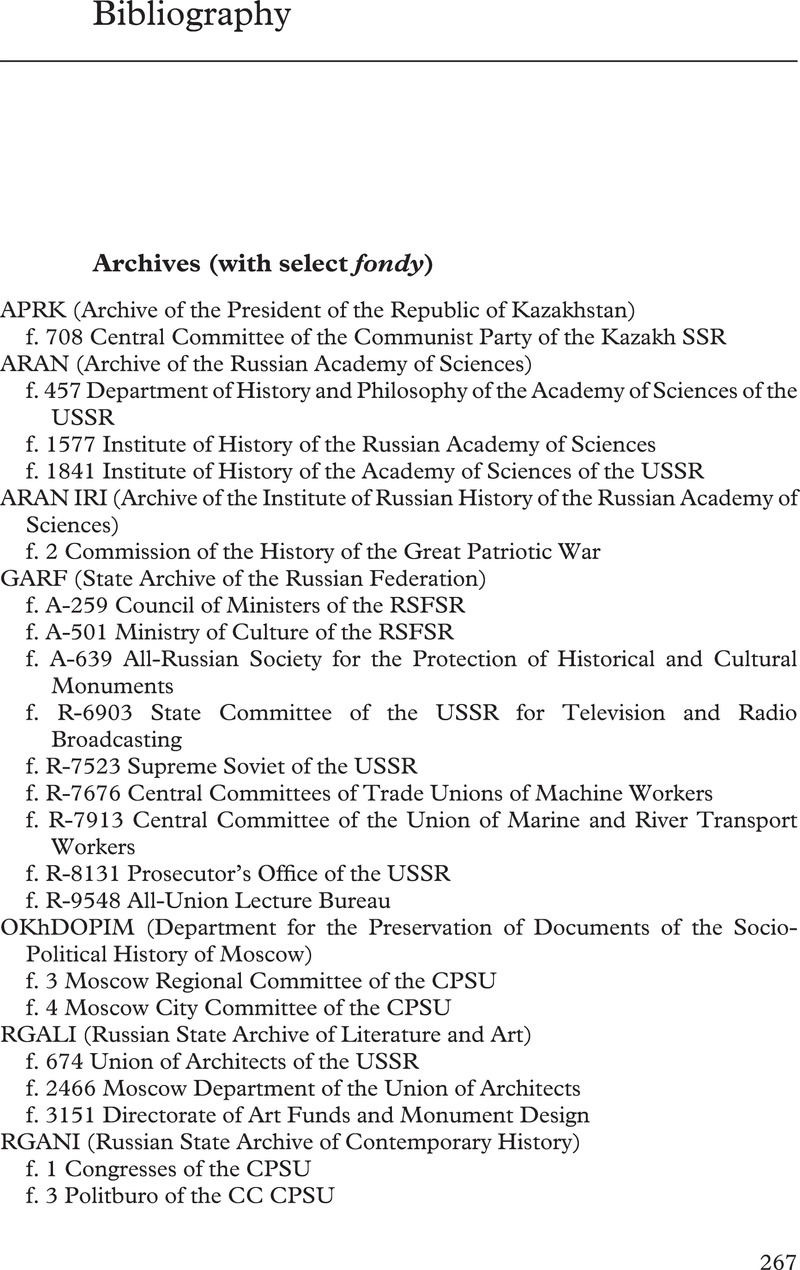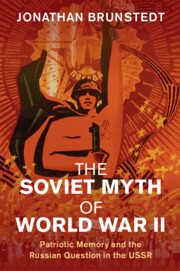Book contents
- The Soviet Myth of World War II
- Studies in the Social and Cultural History of Modern Warfare
- The Soviet Myth of World War II
- Copyright page
- Dedication
- Contents
- Figures
- Acknowledgments
- Abbreviations
- Additional material
- Introduction
- 1 Stalin’s Toast
- 2 Victory Days
- 3 Usable Pasts
- 4 Monumental Memory
- 5 Patriotic Wars
- Conclusion
- Bibliography
- Index
- References
Bibliography
Published online by Cambridge University Press: 24 June 2021
- The Soviet Myth of World War II
- Studies in the Social and Cultural History of Modern Warfare
- The Soviet Myth of World War II
- Copyright page
- Dedication
- Contents
- Figures
- Acknowledgments
- Abbreviations
- Additional material
- Introduction
- 1 Stalin’s Toast
- 2 Victory Days
- 3 Usable Pasts
- 4 Monumental Memory
- 5 Patriotic Wars
- Conclusion
- Bibliography
- Index
- References
Summary

- Type
- Chapter
- Information
- The Soviet Myth of World War IIPatriotic Memory and the Russian Question in the USSR, pp. 267 - 297Publisher: Cambridge University PressPrint publication year: 2021

